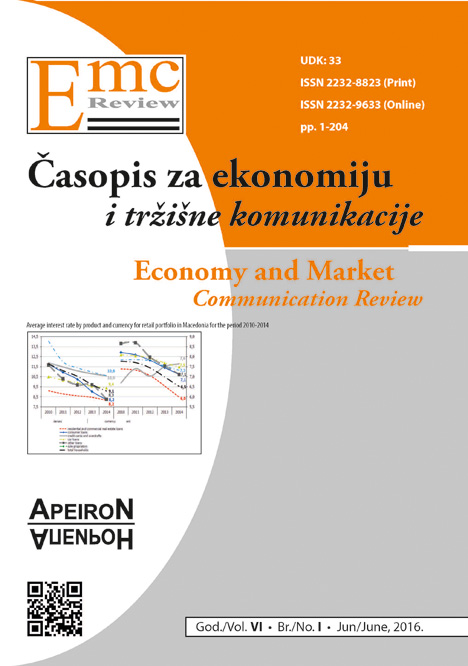RAZVOJ LJUDSKIH RESURSA KAO PREDUSLOV ORGANIZACIONE USPJEŠNOSTI / HUMAN RESOURCE DEVELOPMENT AS A CONDITION OF ORGANIZATIONAL SUCCESS
DOI:
https://doi.org/10.7251/EMC16161RAbstract
Contemporary business conditions do not impose only need for adjustment of the organization but also the need for adjustment of employees. Human resources, manifested through individual knowledge, skills, individual qualities and achievements, is the basis of competitive advantage of organizations and the main resource for the survival, the growth and development of modern organizations. Treating employees as a decisive factor for the success of organizations, it follows that their primary duty is to provide, maintain and develop the best people through the wide range of human resource activities. Thus, Human Resource Development, designated as a key activity for achieving the projected goals of the organization, can be defined as a set of systematic and planned activities appointed by an organization to provide its members with the opportunities to learn necessary skills to meet current and future job demands. Employees are increasingly accepting the reality that education becomes their responsibility in order to develop their full working potential and to ensure self employment opportunities. On the other hand, encouraging educational programs, organizations strive not only to meet the business needs for education of employees, but also their interests, creating and developing the climate of continuous learning and dissemination of knowledge in all areas. To what extent will the organization attach importance to certain practices that guide and encourage staff development depends on its current situation, activities, goals and adopted development strategy. Adequate choice, the assignment according to their abilities and affinities, continuous training and education, are generally accepted methods without which the development of employees is not possible. The American Society for Training and Development (ASTD) estimates that U.S. organizations spent $134.1 billion on employee learning and development in 2008, and $125.9 billion in 2009.
Human resource managers in large organizations ranked training and development as the most important functional area they had to deal with because HRD programs must respond to job changes and integrate the long-term plans and strategies of the organization to ensure the efficient and effective use of resources. Combining different methods and approaches, and referring to all employees in the organization, training and human resources development become a tools for achieving change and the effects they produce are becoming a far-reaching and strategic.
